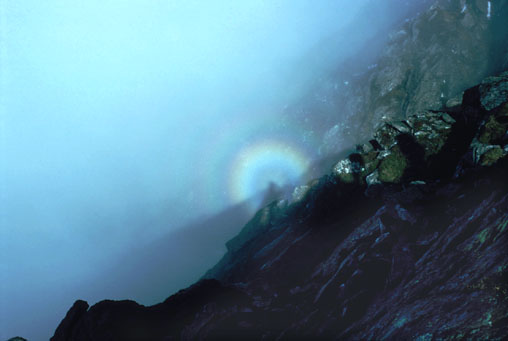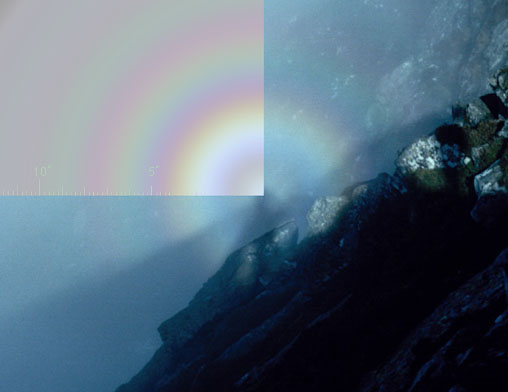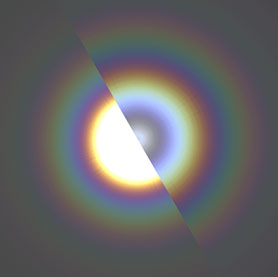 |
| Glory
on Pinnacle Ridge, Pen yr Ole Wen, Wales photographed by
John Hardwick in February 1993. It shows the classical appearance
of a mountain glory as sunshine breaks through a mist. When
the mist is nearby the glory is accompanied by your shadow.
Larger image. ©John
Hardwick, reproduced with permission. |
 |
| Glories
can be predicted by Mie scattering calculations as used in IRIS.
The matching simulation at upper left shows that the droplets
were small, only 10 micron diameter. |
|
|
Glories
are always directly opposite the sun, centered at the antisolar
point and therefore below the horizon except at sunrise and
sunset.
Look for them whenever mist or cloud is beneath you and the
sun breaks through to shine on it.
Glories can be seen on mountains and hillsides, from aircraft
and in sea fog and even indoors.
They are formed when light is scattered backwards by individual
water droplets.
They have a bright centre but not nearly as bright as the corona's
aureole. Their rings are delicately coloured like those of the
corona's, blue on the inside changing through greens to red
and purple outside. The ring intensities fall off much more
slowly than those of the corona and sometimes three or even
four rings are visible.
Shadows converge on the antisolar point and so glories are nearly
always accompanied by your shadow or that of the aircraft you
are in. When the shadow is grotesquely distorted by perspective
it is called a "Brocken spectre".
There are other glows at the antisolar point, the heiligenschein
and the opposition effect
but these do not have the glory's shimmering rings. |
 |
| Glory
(right) and corona (left) for 20µm dia. droplets
- IRIS simulations. |
|
|


